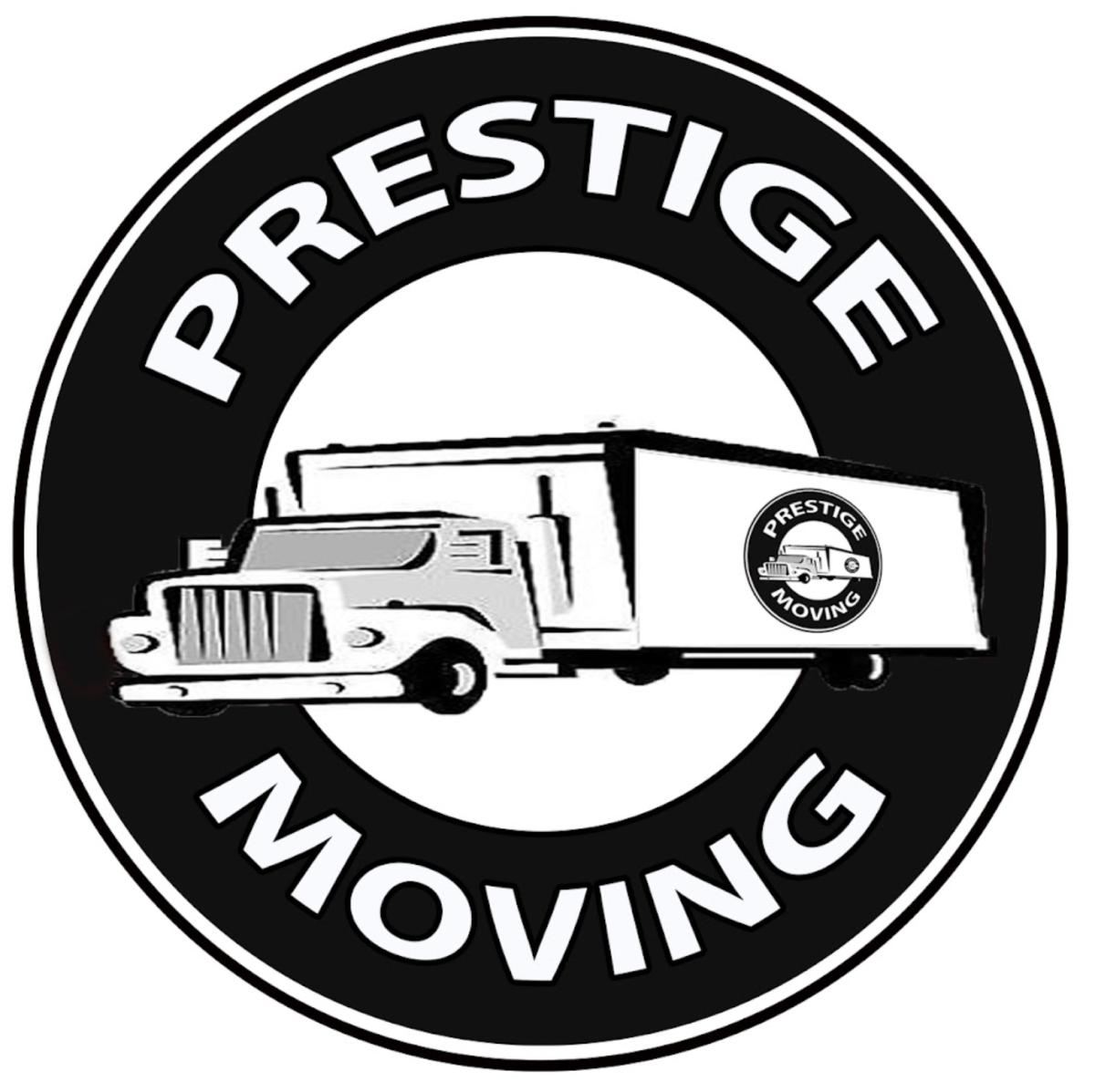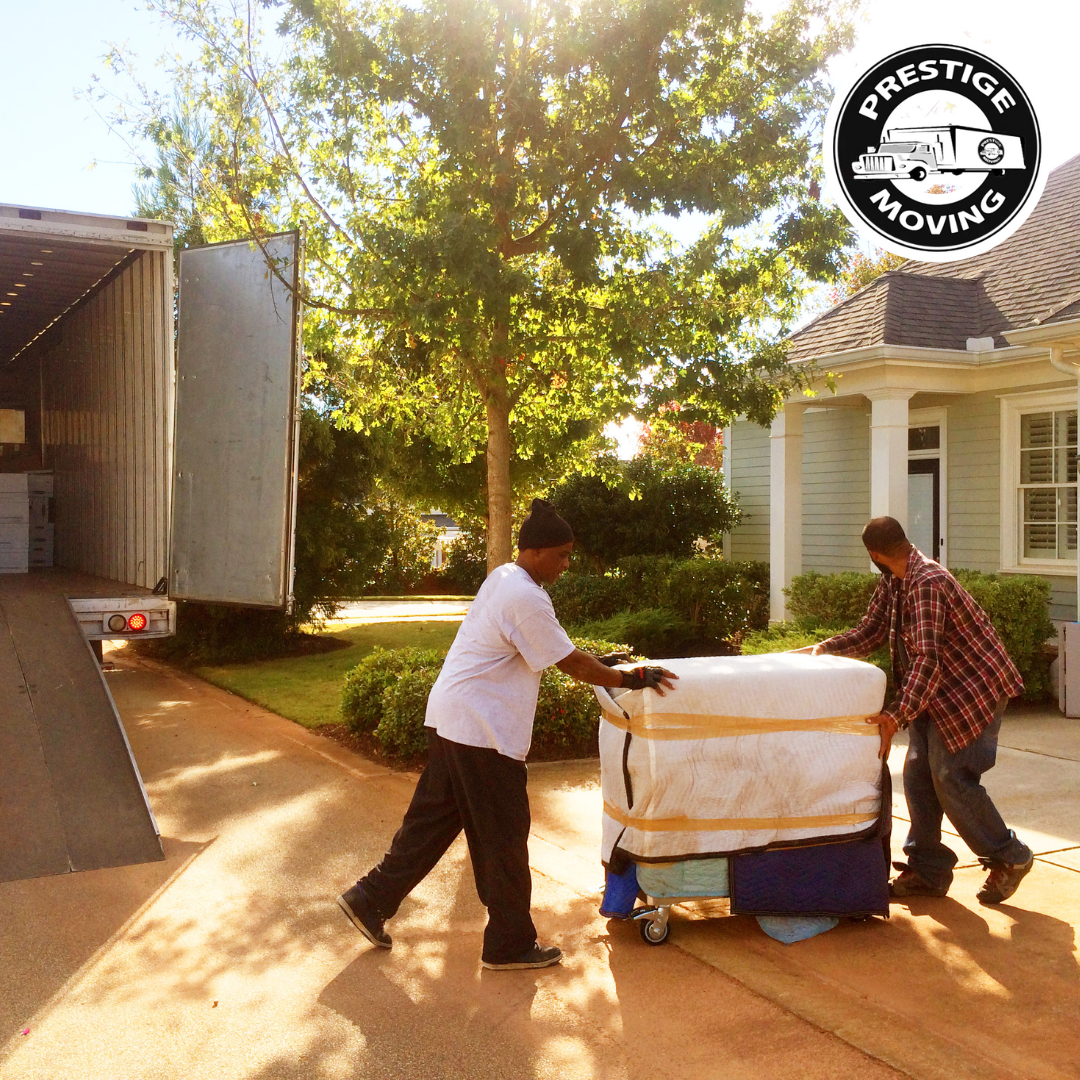Prestige Moving Shares Expert Tips on How to Properly Move Large and Heavy Items
Phoenix, United States - August 19, 2024 / Moving Service Marketing Company /
Moving large and heavy items can be daunting and challenging, whether moving to a new home or simply rearranging your furniture. It requires careful planning, proper equipment, and safety measures. Without these precautions, you risk injuring yourself or damaging your belongings. In this guide, Prestige Moving discusses some safety tips for making moving large and heavy items smoother and safer.
Precautions and Preparation
Before lifting any heavy item, take a moment to assess what you're dealing with. Consider the weight, size, and shape of the item. If it's beyond your safe lifting capacity, don't hesitate to seek additional help or assistance. Lifting heavy items beyond your capacity can lead to severe injuries, including muscle strains and back injuries. Knowing your limits is the first step toward ensuring safety.
Once you've assessed the load, the next step is to plan the route for moving the item. Identify the best path to transport the item from one point to another. Look for obstacles such as furniture, rugs, or loose wires that could pose tripping hazards. It's essential to clear these obstacles in advance to ensure a smooth and accident-free transportation process.
Imagine moving a bulky couch through a hallway cluttered with small tables and chairs. Trying to navigate this without clearing a path first could result in accidents or damage to valuable items. Proper planning is key to preventing mishaps during furniture transport.
Effective communication is equally important when moving heavy items, especially if you need help. Establish clear communication signals with anyone who can help you coordinate your movements effectively. Ensuring everyone is on the same page helps prevent misunderstandings and minimize the risk of accidents during the transportation process. Having a designated leader or person calling out directions can ensure that everyone moves synchronously, preventing any unexpected collisions or incidents that might occur due to miscommunication.
Each precautionary step before moving a heavy item significantly reduces the likelihood of accidents or mishaps and makes for a safer overall moving experience.
Essential Safety Gear
When moving large and heavy items, having the proper safety gear can mean the difference between a smooth, injury-free move and a painful mishap. Here are some key safety equipment that can protect you from cuts, strains, and other hazards associated with lifting and moving heavy furniture and equipment.
Gloves
Gloves are an important part of your safety gear when handling heavy items. Heavy-duty gloves with impact protection offer a barrier against cuts, blisters, and abrasions. They also provide a good grip when lifting, ensuring that items don't slip out of your hands during transit.
Back Supports
Back support belts are crucial in maintaining proper posture while lifting heavy objects. These adjustable belts offer firm support to your lower back, reducing the risk of lower back injuries that can occur during lifting tasks. Whether you're engaged in a single heavy lift or repetitive lifting tasks, back support belts are valuable in preventing strain on your back muscles and spine.
Footwear
When moving heavy items, wearing the right footwear is non-negotiable. Choose closed-toe shoes with non-slip soles to prevent foot injuries and slips. Steel-toed boots offer protection against potential drops, especially when dealing with larger and weightier items.
Moving Straps
Investing in moving straps can improve your handling of heavier items. These specialized straps are designed to distribute weight more evenly across your body, making it easier to manage heavy objects without straining your back and arms. Using moving straps, you can facilitate smoother movement of large furniture pieces or equipment while minimizing the risk of muscular injuries.
By incorporating these safety measures into your moving routine, you actively minimize the potential for injury while ensuring the task is completed efficiently and safely. Each piece of safety gear has a specific purpose—providing essential hand protection or reducing strain on your back—and collectively, they form a comprehensive safety net that allows you to confidently navigate the challenges of moving heavy items.
Safe Lifting Techniques
Lifting heavy items is a leading cause of workplace injuries, with shoulder and back injuries comprising over 36% of missed workdays in 2001. Overexertion and cumulative trauma are major factors in these injuries. Smart lifting practices can prevent injuries such as back sprains, muscle pulls, wrist and elbow injuries, and spinal injuries.
Bend at the Knees
The adage "lift with your legs, not with your back" holds here. If you bend at the waist while lifting, you strain your lower back muscles and spinal discs enormously. Lower yourself by bending at the knees instead of the waist to prevent this. This keeps your back straight and uses your leg muscles much stronger than those in your lower back. Consider it engaging the body's powerhouse to lift and carry heavy loads.
Remember, your leg muscles are designed for weight-bearing tasks and are generally less prone to injury than your back muscles. By employing this technique, you'll distribute the weight more evenly across your body and reduce the potential for strain or injury to your back.
Keep the Load Close to Your Body
It's important to keep the load as close to your body as possible. Holding the item close to your torso reduces the strain on your back and maintains better balance. The further away from your body you hold a heavy item, the more stress it puts on your back and core muscles. By keeping it close, you minimize unnecessary strain on these areas.
Avoid Twisting
Twisting when lifting causes stress on spinal discs and can result in painful muscle strains. Instead of twisting at the waist while carrying an object, turn your entire body in your desired direction. This reduces the risk of injuring your spine or muscles.
Lift Smoothly
Always aim for smooth, controlled movements when lifting or lowering a heavy item. Jerky or sudden movements can lead to muscle strains and loss of balance. When lifting, engage your core muscles and use a steady motion without any sudden jerks or twists.
By employing these safe lifting techniques—bending at the knees, keeping the load close to your body, avoiding twisting motions, and lifting smoothly—you drastically reduce the risk of workplace injuries and ensure a safer environment for yourself and those around you.
Utilizing Moving Equipment
Moving heavy furniture and equipment can be challenging, but using the right tools can make all the difference. Here are some essential moving equipment to help ease the burden of relocating heavy items and ensure safety and efficiency.
Dollies and Hand Trucks
A dolly or hand truck is one of the most valuable tools for moving heavy items. These wheeled devices reduce manual lifting and provide a stable platform for transporting large, bulky items. When using a dolly or hand truck, securing the load with straps to prevent shifting during transport is crucial, reducing the risk of accidents and potential damage to moving items.
Furniture Sliders
Furniture sliders are handy for heavy furniture such as sofas, cabinets, or appliances. These sliders are placed under the legs or corners of heavy items, allowing them to glide smoothly across the floor with minimal effort. By reducing friction, furniture sliders make it easier to move heavy items and minimize the risk of damaging the floor surface.
Lifting Straps
Lifting straps are an ingenious solution for handling weighty objects. By distributing the item's weight across your body, lifting straps leverage your entire physique, making lifting and maneuvering hefty loads significantly easier. The straps go under the item and over your shoulders, providing a secure and ergonomic lifting mechanism that minimizes strain on your back and arms.
Ramps
Portable ramps are indispensable when moving items between different elevations. They allow for the safe and efficient transfer of items up or down inclines, minimizing the risk of slipping or dropping the load. Ramps are particularly beneficial when moving heavy equipment or furniture into or out of trucks, vans, or storage units.
Utilizing these different types of moving equipment can significantly reduce the physical strain of relocating large and heavy items while ensuring the safety of both individuals involved in the moving process and the items being transported.
Organizing Your Moving Team
When moving large and heavy items, a well-organized team can make all the difference. Here are some key elements that contribute to a successful and safe moving experience.
Assign Roles
Clearly defining each person's role in the moving process is crucial. Whether lifting, guiding, or ensuring the path is clear, assigning specific roles enhances efficiency and reduces confusion. By establishing clear responsibilities, everyone knows what they need to do, which helps prevent misunderstandings and ensures each task is performed with precision and care.
For example, designating someone as the "Lifter" who focuses on handling the heavy lifting, a "Spotter" who guides and communicates with the lifter, and a "Coordinator" who oversees the entire process can streamline the moving operation and minimize the risk of accidents.
Practice Team Lifting
When lifting large items, practice coordinated lifting. It's essential to ensure everyone lifts simultaneously to maintain balance and control. This coordination minimizes the risk of items slipping or tilting during the lifting process, thereby reducing the potential for injuries and property damage.
Scheduled Breaks
Moving heavy items can be physically taxing, and fatigue increases the risk of accidents and injuries. Therefore, it's essential to avoid fatigue by scheduling regular breaks. Rest is crucial for maintaining focus and strength throughout the moving process. By allowing team members to recharge, you help ensure they remain alert, attentive, and physically capable of safely handling heavy items.
First Aid Preparedness
Accidents can happen even in the most organized moving operations. Keeping a first-aid kit on hand is essential. In case of minor injuries like cuts or bruises, immediate treatment can prevent them from becoming more serious. This preparedness reflects a commitment to the safety and well-being of your team members—an essential aspect of responsible leadership during any moving endeavor.
By emphasizing safety through proper first aid preparedness, you demonstrate care for your team's welfare while ensuring that minor mishaps are promptly addressed, allowing the moving process to continue smoothly without interruptions.
Professional Tips to Prevent Injuries
When moving heavy furniture and equipment, ensuring the safety of your team and preventing injuries is crucial. Here are some expert tips to help safeguard against potential hazards during the moving process.
Professional Training
It's essential to seek professional advice or training on proper lifting techniques and safe moving practices. Many organizations offer workshops or online tutorials to educate individuals on the correct lifting methods. This type of training equips employees with valuable knowledge about lifting safely, reducing the risk of injuries associated with moving heavy objects.
Professional training can provide insights into topics such as:
- Proper lifting posture to minimize strain on the back and shoulders.
- Techniques for leveraging leg strength when lifting heavy items.
- Strategies for teamwork and coordination during a move to prevent accidents.
Implementing these strategies can significantly reduce the likelihood of workplace injuries related to heavy lifting and ensure the well-being of your team throughout the moving process.
In conclusion, when moving large and heavy items, it's essential to prioritize safety by utilizing appropriate moving equipment, organizing your team effectively, taking scheduled breaks, and being prepared for accidents. By following these tips and implementing safe practices, you can ensure a smooth and secure moving process while safeguarding the well-being of both individuals involved in the move and the items being transported. Contact Prestige Moving for professional moving services and advice on safely relocating your possessions. Remember, safety always comes first. So, whether you're moving to a new home or office, remember these tips for a safe and successful move.

Contact Information:
Prestige Moving
15475 n 181st ave Surprise az 85388
Phoenix, AZ
United States
Tyler Robinson
(623) 398-9011
https://prestigemovingcoaz.com/
Original Source: https://prestigemovingcoaz.com/media-room/




